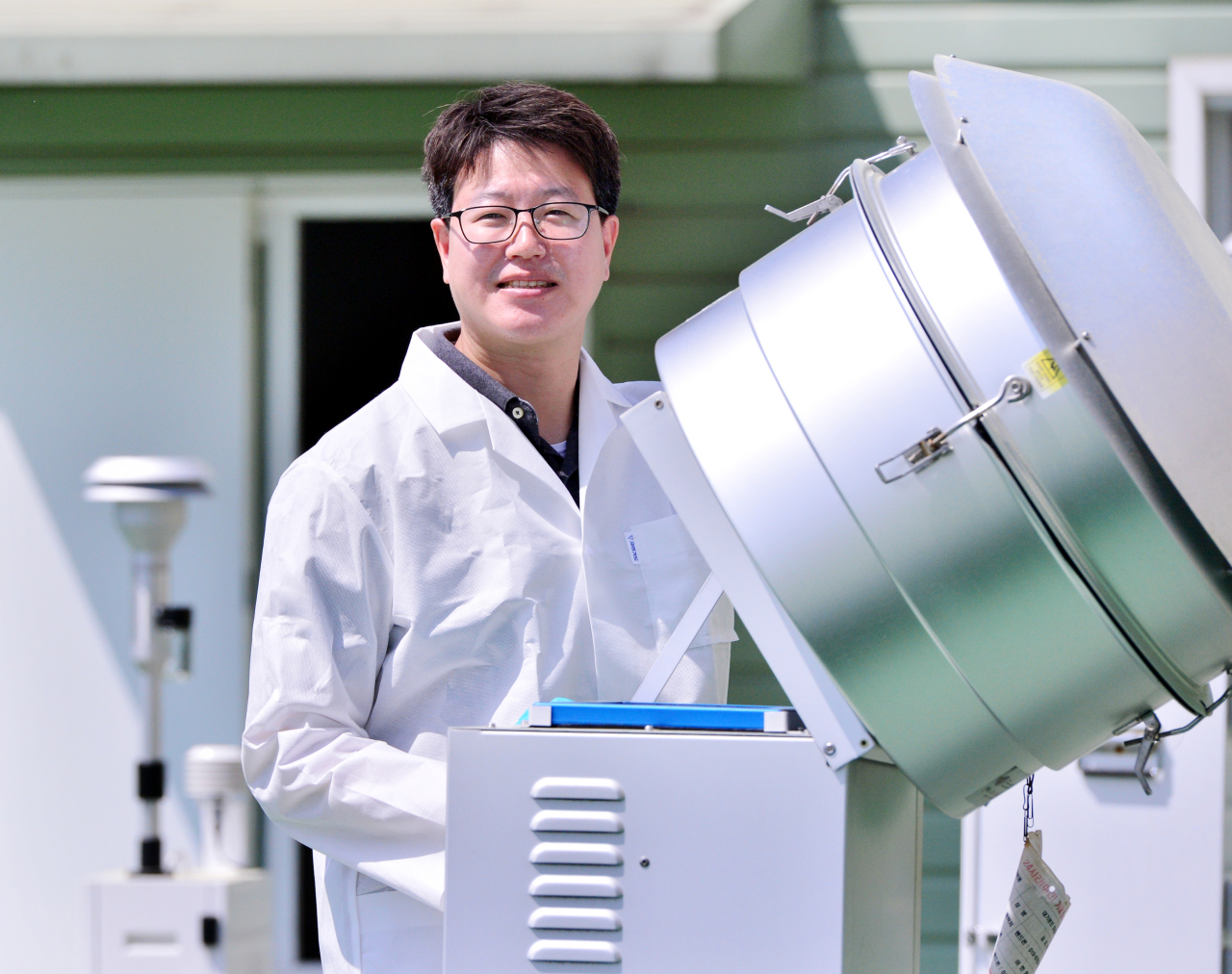[#WeFACE] Study hones in on radioactive materials to track fine dust origins
Looking at radioactive materials may ascertain China’s fine dust impact on Korea
By Shin Ji-hyePublished : April 28, 2021 - 14:16

South Korean researchers are turning to analyses of radioactive materials present in fine dust in hopes that it will better help them track down origins of the hazardous air pollutants.
While scientists have often pointed to China as one of the main culprits, it has been difficult to prove the scope of the impact on Korea because Beijing does not disclose the latest information on its fine dust emissions.
The Korea Atomic Energy Research Institute, a government-funded institute established in 1959 to foster nuclear energy technologies, is carrying out research to ascertain how much of the fine dust comes from its neighboring country by targeting radioactive elements.
“In fine dust, there are radioactive materials and the amount of each radioactive element varies each day. Looking at this, we began to track these elements to find out where they come from,” Kim Ji-seok, a senior researcher at the KAERI who is leading the project, said in an interview with The Korea Herald.
The project is part of an ongoing study that began in July 2018 and their findings are based on data collected from fine dust monitoring stations in Seoul and Daejeon.
“In the case of beryllium-7, one of the radioactive elements found in fine dust, it does not come from usual social activities or factories on the ground. It is normally produced in the stratosphere, which means it falls from an altitude to the ground,” Kim said.
The team estimates that fine dust found to contain a large amount of beryllium-7 come from China.
“This is because fine dust from China normally floats in the high altitude for long-distance travel before coming down to the ground,” he said.
On the other hand, other nuclides, such as lead-214 or lead-212, have a short life span and disappear quickly so little remains after a day.
If lead-214 or lead-212 are found present in fine dust, he said it is likely the pollutants originated from those generated within the nation.
Kim said that honing in on radioactive elements in the study will help them establish their findings of the origins and impact on Korea, as other impurities are unlikely to be added while the fine dust is traveling over the Yellow Sea, which separates Korea and China.
But there are limitations to the study, as the results will only likely cover fine dust from Chinese coastal cities.
“The downside is that because the research is carried out just between the tip of China near the West Sea (Yellow Sea) -- not the center of the mainland -- and the tip of Korea,” he said, adding that they are also studying other nuclides in different ways to make up for the shortcomings.
Preliminary findings so far have showed that higher levels of beryllium-7 have been detected in the winter and spring seasons, but it will take some time before they can verify and establish the origins.
“There is little information now about atmospheric conditions. The public can only see the concentration level of fine dust. We plan to provide more atmospheric information such as where the pollution comes from and what pollutants are abundant through technical verification. It will take five to six years,” he said.
The institute plans to establish a database of various substances contained within the fine dust and analyze each substance to accurately reveal their origins.
It also aims to provide more accurate information by looking at the amount of radiation emitted from radioactive materials in the fine dust collected.
By Shin Ji-hye (shinjh@heraldcorp.com)







![[Graphic News] More Koreans say they plan long-distance trips this year](http://res.heraldm.com/phpwas/restmb_idxmake.php?idx=644&simg=/content/image/2024/04/17/20240417050828_0.gif&u=)
![[KH Explains] Hyundai's full hybrid edge to pay off amid slow transition to pure EVs](http://res.heraldm.com/phpwas/restmb_idxmake.php?idx=644&simg=/content/image/2024/04/18/20240418050645_0.jpg&u=20240419100350)






![[From the Scene] Monks, Buddhists hail return of remains of Buddhas](http://res.heraldm.com/phpwas/restmb_idxmake.php?idx=652&simg=/content/image/2024/04/19/20240419050617_0.jpg&u=20240419175937)

![[KH Explains] Hyundai's full hybrid edge to pay off amid slow transition to pure EVs](http://res.heraldm.com/phpwas/restmb_idxmake.php?idx=652&simg=/content/image/2024/04/18/20240418050645_0.jpg&u=20240419100350)

![[Today’s K-pop] Illit drops debut single remix](http://res.heraldm.com/phpwas/restmb_idxmake.php?idx=642&simg=/content/image/2024/04/19/20240419050612_0.jpg&u=)